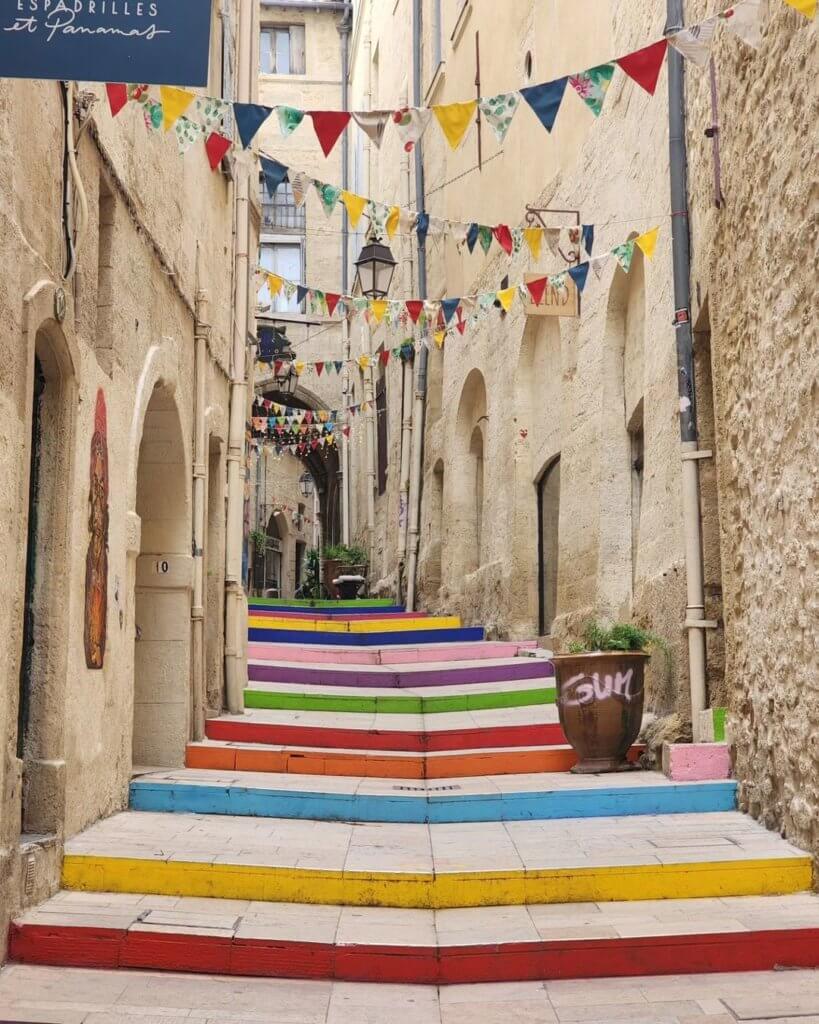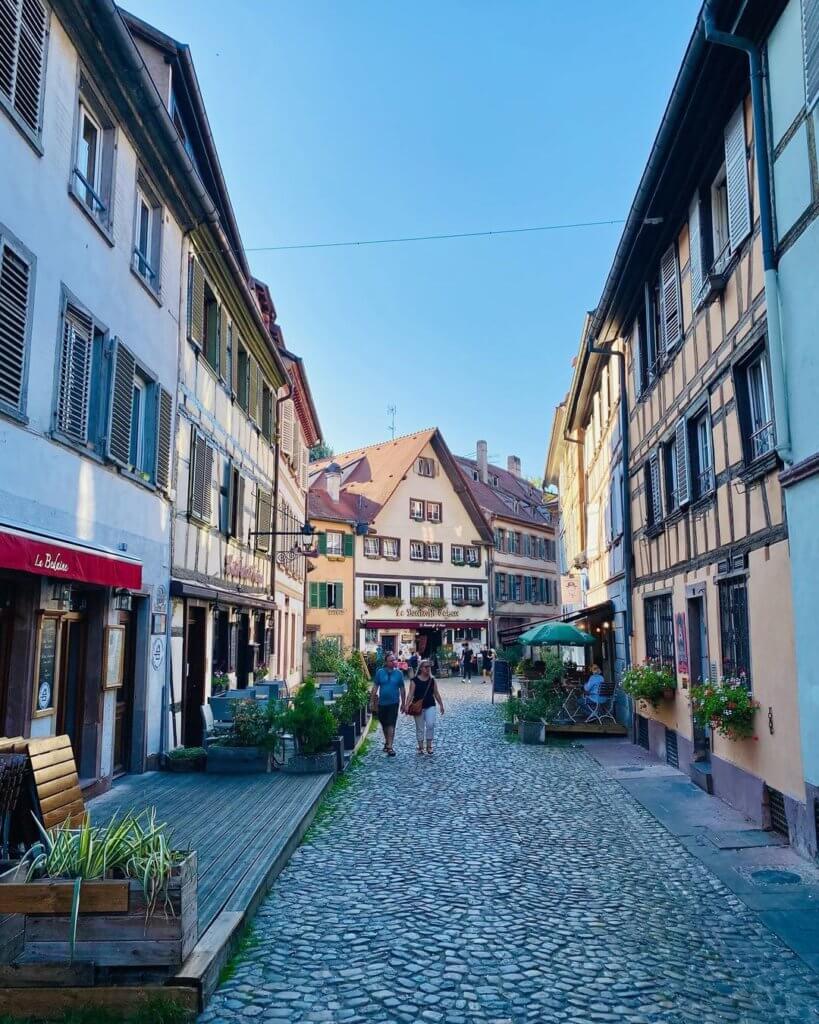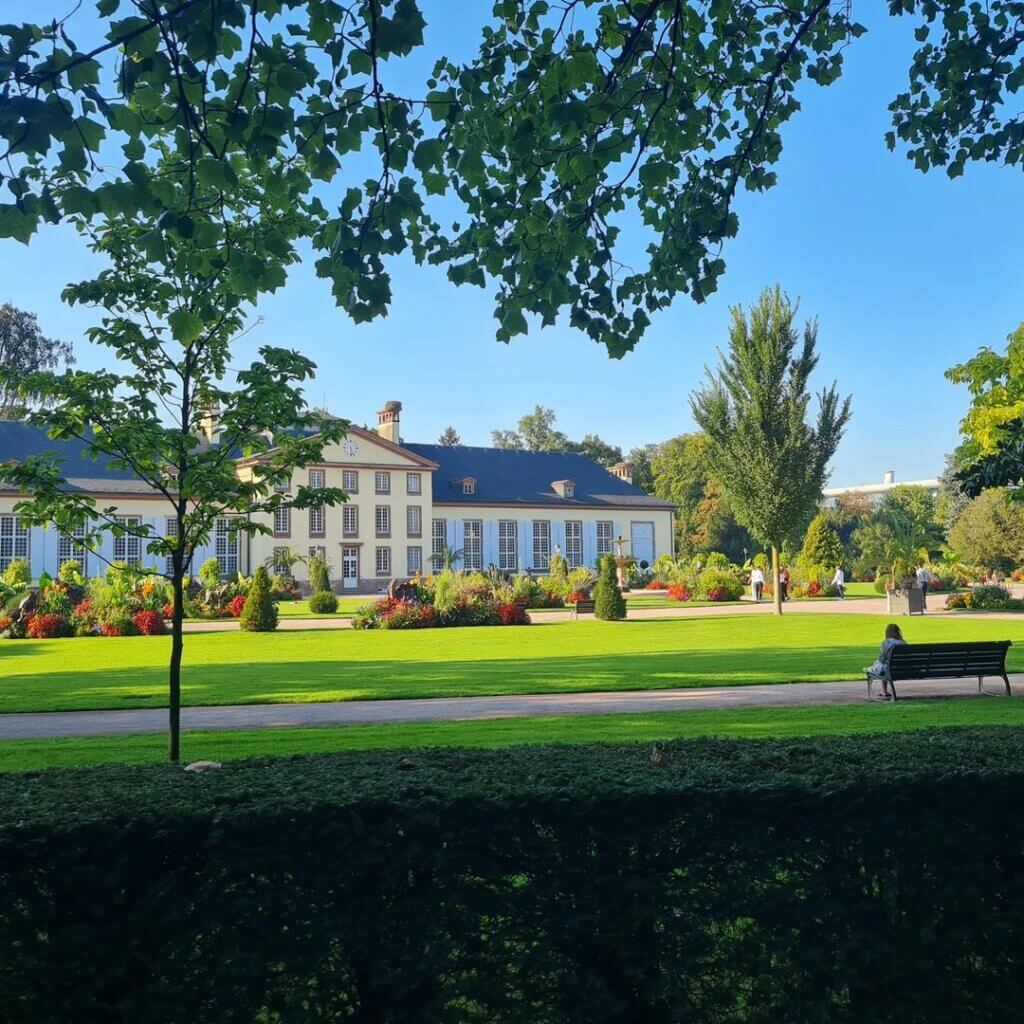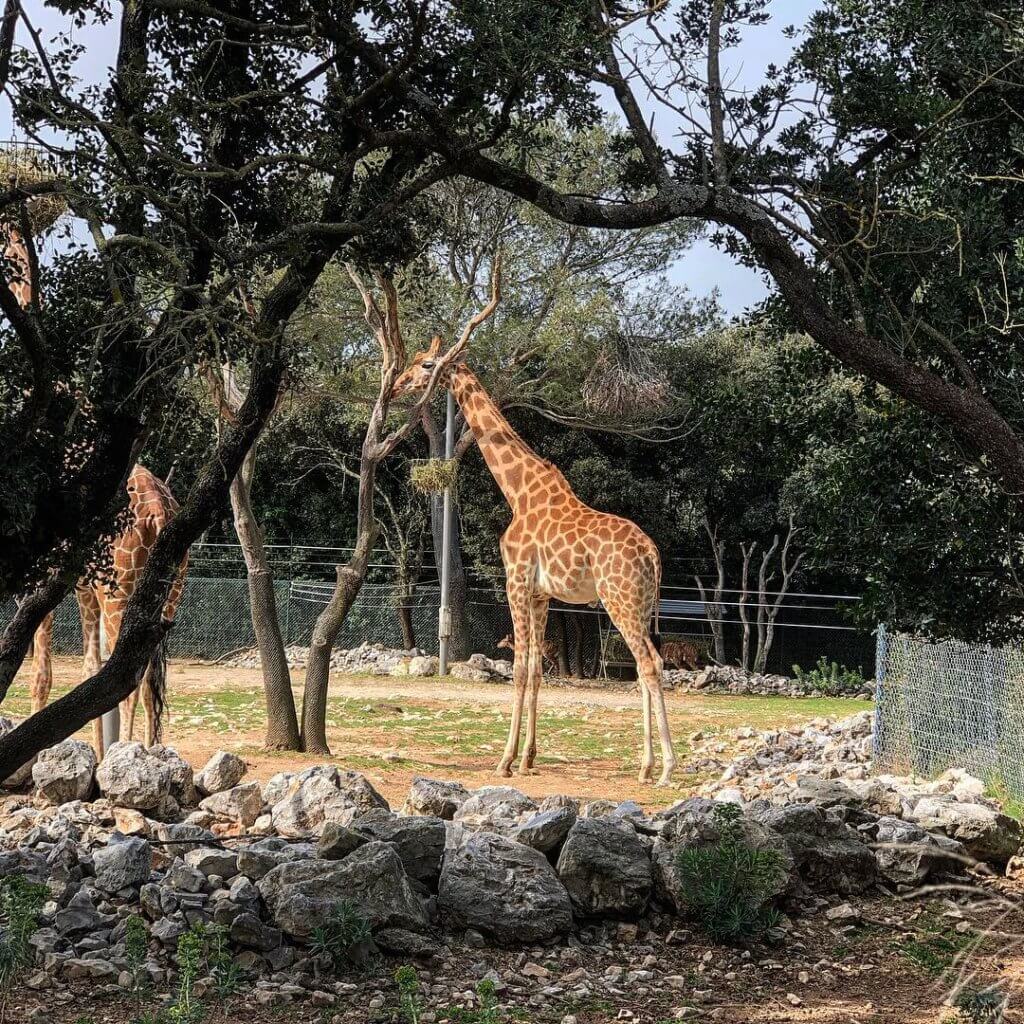Montpellier or Strasbourg? Which city should you visit?
Stuck between Montpellier or Strasbourg for your next French city break? We’ll go over everything you need to know about both cities to help you decide. Here’s a quick rundown based in interests:
🏛 History Buffs: With its stunning Cathedral, medieval history and unique Franco-German heritage Strasbourg takes the win here.
🏖 Beach Lovers: Strasbourg is nowhere near a beach so Montpellier wins by default!
🥐 Foodies: Montpellier is full of fresh seafood and Mediterranean dishes. Whereas Strasbourg offers a unique mixture of French and German influences that results lots of in hearty, meat-based dishes.
🌳 Nature Enthusiasts: Strasbourg is very close to the Black Forest and Vosges Mountains, perfect for hiking. Montpellier has the Mediterranean Sea and vast expanses of wetland on its doorstep. For mountains and hiking, choose Strasbourg. For the sea, cycling and bird watching go to Montpellier.
🏢 Urban Explorers: This isn’t an easy pick. Montpellier has a fun youthful vibe and is great for a lazy few days wandering around eating and drinking coffee. Strasbourg has lots of interesting museums, is more romantic and has an old-world feel to it. It all depends on what sounds most appealing to you?
🍷 Wine Lovers: Both cities are close to wine regions. Montpellier is close to Languedoc and Strasbourg is near Alsace. Let you taste buds lead the way!
🎒 Backpackers: Montpellier is France’s youngest city which makes it the perfect destination for backpackers looking for a fun destination, with great weather and easy access to the beach.
👵 Over 60’s: Strasbourg’s museums and old-world charm makes it a better destination for older travellers looking for a relaxing city break.
👨👩👦 Family-Friendly: If you’re planning a winter break, head to Strasbourg, the whole city turns into a winter wonderland that the kids will love. They might find it a little boring the rest of the year. If you’re planning a summer trip, Montpellier is the better option, its beaches and outdoor attractions are much more enjoyable when the weather is warm.
Conclusion: Montpellier is the better destination for a younger crowd looking for a fun time with great food and easy access to beaches. Strasbourg is the more romantic destination, amazing in winter (provided you wrap up), and has lots of interesting museums.
Have you decided? If not continue reading, we’ll offer more information on both cities to help you decide.
Montpellier
Don’t overlook Montpellier just because it isn’t as famous as Paris or as glitzy as Cannes. This city, near France’s Mediterranean coast, has its own charm. Montpellier is a lively place where lots of cultures come together. You can taste this in the delicious variety of food the city has to offer.
If you love history, Montpellier has lots to offer. The city has been around since the Middle Ages. Its old part of town, Ecusson, is full of tiny, winding streets and hidden squares, waiting for you to explore them. And, of course, you can’t miss the city’s own Arc de Triomphe.
But Montpellier is more than old buildings and good food. The city loves arts and culture, too. You can visit lots of museums, art centres and even catch a festival if you time your visit right. If you want a mix of history, food and a laid-back beach feel, Montpellier could be just the right place for you to visit.

Strasbourg
Strasbourg, a city that straddles the border of France and Germany, offers an interesting fusion of cultures that’s definitely worth exploring. It’s historic centre, known Grande Île, is a UNESCO world heritage site and is filled with beautiful cobblestone streets and half timbered houses. But Strasbourg isn’t just about visiting the past.
It’s a dynamic city brimming with a unique culture. With plenty of museums, a great art scene and bustling local markets this is a city that caters to most travellers. Plus, the local cuisine is an interesting blend of French sophistication and hearty German food! If you’re looking for a somewhat different destination for your next holiday, Strasbourg should definitely be added to your list!

While we’re comparing Montpellier and Strasbourg in this post, we’ve also looked at how Montpellier stacks up against other cities like Cannes, Lille or Lyon. We’ve linked to those articles below if you want to take a look!
Pros and Cons of Montpellier and Strasbourg
Montpellier Pros:
- 🏛 Culture: Rich in museums, galleries, and theaters.
- 👩🎓 Student Life: Known for its youthful, academic atmosphere.
- 🍷 Wine: Located in a prominent wine region.
- 🌳 Green Spaces: Abundant parks for leisure.
- 🚊 Public Transport: Efficient tram system for getting around.
Montpellier Cons:
- 💶 Moderate Cost: More affordable than some French cities but not cheap.
- 🏖 Beaches: Available but require a short commute.
- 🌃 Nightlife: Energetic but leans towards the laid-back, student-oriented side.
- 🌡 Weather: Hot summers may not be to everyone’s liking.
- 📸 Tourist Attractions: Fewer iconic sights than some other French cities.
Strasbourg Pros:
- 🏰 History: Famous for its well-preserved medieval architecture.
- 🇪🇺 EU Importance: Hosts several European institutions.
- 🎄 Christmas Market: Known for hosting one of the oldest Christmas markets in Europe.
- 🚢 Canals: Beautiful canals crisscross the city.
- 🚃 Public Transport: Good tram and bus network.
Strasbourg Cons:
- 🌨 Weather: Colder winters compared to southern France.
- 💶 Cost: Similar to Montpellier, not cheap but generally affordable.
- 🎭 Cultural Scene: Less diverse compared to bigger cities.
- 🎉 Nightlife: More subdued, especially outside of student areas.
- 🍽 Cuisine: Heavily influenced by German food, which may not be to everyone’s taste.
Which City is Safer? Montpellier or Strasbourg?
Toulouse holds a crime index of 50.62, categorizing it as moderate. The majority of reported crimes tend to focus on property issues, such as vandalism and theft. Certain neighborhoods, particularly towards the North, might be areas where one should tread with caution, especially when it’s dark. However, the city’s central tourist hubs are usually safe, with travelers experiencing minimal disturbances.
In comparison, Strasbourg registers a notably lower crime index at 40.42. In spite of its vibrant urban character, the majority of reported crimes are minor offenses like pickpocketing. The areas that see a spike in more serious infractions are typically away from the main city attractions, meaning tourists rarely encounter them. As with any destination, it’s wise to be aware of your surroundings and to avoid unnecessary risks, especially late in the evening.
How long to stay in Montpellier
Choosing the right amount of time to spend in Montpellier might seem challenging, considering the city’s vibrant culture, historic gems, and pleasant Mediterranean climate. The length of your stay really depends on your personal interests and the pace at which you want to explore.
If your aim is to get a taste of the city’s lively atmosphere, wander through the picturesque old town, and sample local cuisine, a visit of 2 to 3 days should be sufficient. This allows you enough time to explore the charming pedestrian-only streets of the Ecusson, enjoy a coffee at the Place de la Comédie, and relish local delicacies at a traditional restaurant.
However, if you’re interested in delving deeper into Montpellier’s rich history and culture, a 4 to 5 day visit would be more suitable. This gives you ample time to explore historic sites like the Cathedral Saint Pierre, check out art collections at the Fabre Museum, and visit the stunning botanical garden without feeling rushed.

But, if you’re looking for a more immersive experience, a week in Montpellier would be a fantastic choice. This duration would not only let you thoroughly explore city attractions but also allow time for relaxing at nearby Mediterranean beaches, taking day trips to fascinating spots like the medieval town of Aigues-Mortes or the impressive Roman aqueduct, Pont du Gard, and truly absorbing the vibrant, student-friendly vibe of Montpellier.
How long to stay in Strasbourg
Choosing the ideal duration for a trip to Strasbourg can be a bit of a challenge, given the city’s blend of German and French culture, its rich history, and captivating architecture. The length of your stay ultimately depends on your individual interests and the pace at which you wish to explore.
If your plan is to experience the city’s main attractions, wander through the charming La Petite France district, and taste the region’s mouth-watering dishes like ‘choucroute’ or ‘tarte flambée’, a stay of 2 to 3 days would be ample. This will provide enough time to marvel at the majestic Strasbourg Cathedral, get lost in the quaint, cobblestone streets, and savour the unique gastronomy that Strasbourg offers.

However, if you’re aiming to immerse yourself deeper into Strasbourg’s fascinating history and culture, consider extending your stay to 4 to 5 days. This will afford you the chance to explore the various museums and galleries, such as the Alsatian Museum or the Museum of Modern and Contemporary Art, visit the European Parliament, and take leisurely strolls along the scenic canals, all at a relaxed pace.
For those wanting to truly absorb the Alsatian lifestyle, spending a week in Strasbourg can be a fantastic option. This duration not only provides enough time to thoroughly explore the city’s nooks and crannies but also allows for relaxing café visits and day trips to nearby gems like the charming town of Colmar or the stunning Haut-Koenigsbourg Castle. A week in Strasbourg enables you to fully appreciate the unique blend of cultures and the relaxed pace of life in this beautiful city.
How much is food and drink in Montpellier and Strasbourg?
| Item | Montpellier (€) | Strasbourg (€) |
|---|---|---|
| Beer | €5 – €7 | €5 – €7 |
| Glass of Wine | €4 – €9 | €3 – €10 |
| Coffee | €2 – €4 | €1.50 – €3 |
| Meal at Midrange Restaurant | €20 – €40 per person | €20 – €40 per person |
How much is it to stay in Montpellier or Strasbourg?
| Type of Accommodation | Montpellier (€ per night) | Strasbourg (€ per night) |
|---|---|---|
| Luxury Hotel | €200 – €600 | €150 – €500 |
| Midrange Hotel | €80 – €150 | €70 – €150 |
| Budget Hotel | €50 – €80 | €40 – €70 |
| Hostel | €20 – €40 | €20 – €40 |
When is the best time to visit Montpellier?
🌸 Spring: Between April and June, Montpellier is quite pleasant with average temperatures ranging from 15-25°C (59-77°F). The city starts to come alive with various outdoor events, and the landscapes are beautifully lush, making it an ideal time for sightseeing and enjoying the local parks.
☀️ Summer: From July to August, temperatures can soar up to 30°C (86°F), making it perfect for beach visits as Montpellier is just a short distance from the Mediterranean Sea. Be aware, though, that it’s also peak tourist season, so the city can get crowded, and prices might be higher.
🍂 Autumn: September to October offers comfortable temperatures around 20-25°C (68-77°F). The city is less crowded during these months, and it’s a great time to explore the historical sites and enjoy local outdoor cafes.
❄️ Winter: November to March can be quite mild with temperatures around 10-15°C (50-59°F), though it can occasionally drop lower. While it’s not the best time for outdoor activities, it’s a good time to explore Montpellier’s museums and indoor attractions.
When is the best time to visit Strasbourg?
🌸 Spring: Blossoming of Colors Spring (March to May) in Strasbourg is a delightful period, with comfortable temperatures and the cityscape coming alive with blooming flowers. This is an excellent time to explore the picturesque streets of Petite France or take a leisurely boat ride along the Ill River.
☀️ Summer: Warmth and Celebrations Summers (June to August) in Strasbourg are warm, ideal for outdoor exploration of the city’s rich historical sites and the stunning Parc de l’Orangerie. This season also coincides with several festivals such as the Strasbourg Summer Festival and the Longevity Music Festival, adding an extra layer of excitement for visitors.
🍂 Autumn: The Wine Season Autumn (September to November) is a special time in Strasbourg, being a part of the Alsace wine region, it marks the period of grape harvest and wine-making. This season allows visitors to witness the wine-making process and taste some of the finest wines. The weather during this period remains pleasant, and the changing hues of the vine leaves create a stunning backdrop.
❄️ Winter: A Fairytale Setting Winter (December to February) in Strasbourg is truly enchanting. The city is famed for hosting one of the oldest Christmas Markets in Europe, turning the city into a twinkling fairytale land. While it can be quite cold, the festive spirit and fewer tourists make it a unique time to visit.
Average Monthly Temperatures
| Month | Montpellier (High / Low °C) | Montpellier Rain (days) | Strasbourg (High / Low °C) | Strasbourg Rain (days) |
|---|---|---|---|---|
| January | 11° / 2° | 5 days | 5° / -1° | 7 days |
| February | 12° / 3° | 4 days | 7° / -1° | 7 days |
| March | 15° / 5° | 4 days | 12° / 2° | 8 days |
| April | 18° / 8° | 5 days | 16° / 5° | 8 days |
| May | 21° / 12° | 4 days | 20° / 9° | 10 days |
| June | 26° / 15° | 3 days | 23° / 13° | 10 days |
| July | 29° / 18° | 2 days | 26° / 14° | 9 days |
| August | 28° / 18° | 2 days | 25° / 14° | 9 days |
| September | 25° / 14° | 3 days | 21° / 10° | 7 days |
| October | 20° / 11° | 5 days | 15° / 7° | 8 days |
| November | 15° / 6° | 5 days | 9° / 3° | 8 days |
| December | 12° / 3° | 4 days | 5° / 0° | 8 days |
Getting around Montpellier:
Getting around Montpellier is a breeze thanks to its efficient and well-connected public transportation system.
The city’s tram network covers most of the city and is very easy to use. It’s probably the best way to travel around the city cheaply and easily. The trams are even a sight to see themselves, each line designed by a different artist which gives it all a sense of fun!
On top of the trams, Montpellier also boasts numerous bus lines that can take you to places the trams don’t reach. If you prefer to take control of your own travel, the city has several bike rental services, thanks to its flat layout and plentiful bike lanes. The city centre is primarily pedestrianized, making it easy and delightful to explore on foot. Plus, it’s hard to beat a leisurely stroll through Montpellier’s historic streets!
Don’t forget about the Montpellier Méditerranée Airport, located just on the outskirts of the city, if you’re looking to explore further afield. There are plenty of car rental services available here too. So whether you’re sticking to the city or venturing out, getting around in Montpellier is easy, efficient, and convenient.
Getting around Strasbourg:
Strasbourg boasts an efficient public transportation system, primarily made up of trams and buses, operated by the Compagnie des Transports Strasbourgeois (CTS). The city’s tram network is one of the most extensive in France, connecting various parts of the city and making it easy to move around.
The ‘Strasbourg à Vélo’ bike-sharing scheme is an excellent option for those preferring a more active way to explore the city. The city is bicycle-friendly with numerous dedicated bike lanes and routes, making it a delight to navigate on two wheels.
Walking is another wonderful way to experience Strasbourg, especially within the Grande Île, which is a UNESCO World Heritage site and contains many of the city’s historic attractions.
Taxis and ride-hailing services like Uber are also readily available, but fares may be higher during peak tourist seasons or during rush hours. Be sure to check rates before your journey.
Top things to do in Montpellier
- Place de la Comédie: Often referred to as the heart of Montpellier, this bustling square is surrounded by cafes and restaurants. Here, you can absorb the vibrant city atmosphere and admire the iconic Three Graces fountain in the center.
- Musée Fabre: A short walk from the Place de la Comédie will lead you to this prominent art museum. It boasts an impressive collection of European art, spanning from the Renaissance to contemporary pieces.
- Montpellier Zoological Park: This extensive zoological park is a paradise for animal lovers, with a wide variety of species and a unique Amazon greenhouse that replicates the Amazon Rainforest’s ecosystem.
- Jardin des Plantes: Established in 1593, this is the oldest botanical garden in France. Take a leisurely stroll through the lush gardens, filled with an array of plant species.
- Antigone District: Just east of the city center, this district is a testament to Montpellier’s modern architectural achievements. Inspired by Greek and Roman designs, it creates a unique and visually striking urban landscape.
Top things to do in Strasbourg
- Strasbourg Cathedral: The Strasbourg Cathedral, also known as Notre Dame Cathedral, is a stunning masterpiece of Gothic architecture. Its astronomical clock is an engineering marvel that shouldn’t be missed. Climb to the top for panoramic views of Strasbourg and the surrounding region.
- Petite France: This is the city’s most picturesque district, filled with half-timbered houses, quaint canals, and narrow streets. Petite France is a UNESCO World Heritage site and truly is the essence of Strasbourg’s charm.
- European Parliament: Strasbourg is home to the European Parliament, one of the main institutions of the European Union. When in session, you can take a guided tour of the Hemicycle – the parliamentary assembly room.
- Boat Tour: A boat tour on the Ill River is a perfect way to appreciate the city’s mix of French and German architecture, as well as the beautiful nature that surrounds it.
- Parc de l’Orangerie: A visit to this lovely park makes for a relaxing break from sightseeing. Here, you can find a small zoo, a boating lake, and beautifully landscaped gardens.

How to spend three days in Montpellier
Day 1: Exploring the Heart of Montpellier
Begin your Montpellier adventure at Place de la Comédie, the city’s bustling central square. Enjoy a leisurely breakfast at one of the local cafes and soak in the vibrant atmosphere. Next, explore the surrounding historic district, Ecusson, with its narrow, winding streets, charming squares, and elegant mansions. Post lunch, visit the Montpellier Cathedral and the Musee Fabre, a leading fine arts museum in the region. Finish your day with a delicious dinner at one of the many excellent restaurants in the city center.
Day 2: Diving into Science and History
Kick off the second day at the Odysseum, a large shopping and leisure center. Here, you can visit the Planetarium Galilee for a fascinating journey through the cosmos. Later, explore the Château de Flaugergues, a historic castle with beautiful gardens, followed by a wine tasting tour. In the evening, enjoy a walk along the banks of the Lez River, followed by a dinner featuring local Languedoc cuisine.
Day 3: Enjoying Nature and Leisure
Devote your last day to the outdoors. Start with a visit to the Montpellier Zoological Park, home to a wide variety of species. After a picnic lunch in the park, head to the Lunaret botanical garden, the oldest botanical garden in France. Later, you could explore the nearby seaside towns like Palavas-les-Flots or La Grande-Motte, offering beautiful Mediterranean beaches. End your trip with a farewell dinner in Montpellier, reminiscing over your favorite moments.

How to spend three days in Strasbourg
Day 1: Exploring Strasbourg’s Historic Core
Begin your first day in Strasbourg by visiting the impressive Strasbourg Cathedral. Climb up the tower for a stunning panorama of the city. Once you’ve marvelled at the cathedral’s Gothic splendour, take a leisurely stroll through the charming district of Petite France, with its beautiful half-timbered houses and picturesque canals.
For lunch, savour a local delicacy like Tarte Flambée at one of the traditional Alsatian winstubs (wine lounges) in the area. Spend your afternoon exploring the museums around the city center such as the Alsatian Museum or the Fine Arts Museum.
As the day draws to a close, enjoy a river cruise on the Ill for a unique perspective on Strasbourg’s beautiful architecture.

Day 2: A Day at the European Institutions
Start your second day with a visit to the European Parliament. Take a guided tour of the Hemicycle and learn about the workings of the EU. From there, head to the nearby European Court of Human Rights and the Council of Europe, which are also part of the European Quarter.
In the afternoon, relax in the Parc de l’Orangerie. Take a peaceful boat ride on the lake, visit the small zoo, or just enjoy a leisurely stroll in the gardens.
Day 3: Exploring the Surrounding Region
On your final day, embark on a day trip to one of the nearby attractions. The Haut-Koenigsbourg Castle, about an hour’s drive from Strasbourg, offers stunning views of the Alsace region. Alternatively, the city of Colmar, with its charming old town and the famous Unterlinden Museum, is also worth a visit.
Back in Strasbourg, conclude your visit with a farewell dinner at one of the city’s excellent restaurants, perhaps trying another Alsatian speciality, such as Coq au Riesling or Choucroute Garnie.
Gareth is an avid city adventurer with a particular passion for finding amazing food! There’s quite literally nothing he doesn’t like. He spends most of his travelling time trying to find great restaurants and cafes to eat at. Alongside trying local street food which he loves! He’s done most of his travelling in Europe so far but would love to visit Japan and Mexico
When not travelling you can find Gareth boxing, running, or in the gym. He’s got a passion for exercise and loves physical challenges.
You can contact him at gareth@thecityadventurers.com

